Samsung Q9FN (QE55Q9FN) review: Samsung's brilliant 4K QLED TV flagship smashes it out of the park
No, OLED is not the only option if you're shopping for a truly next-level TV and have a few thousand to drop

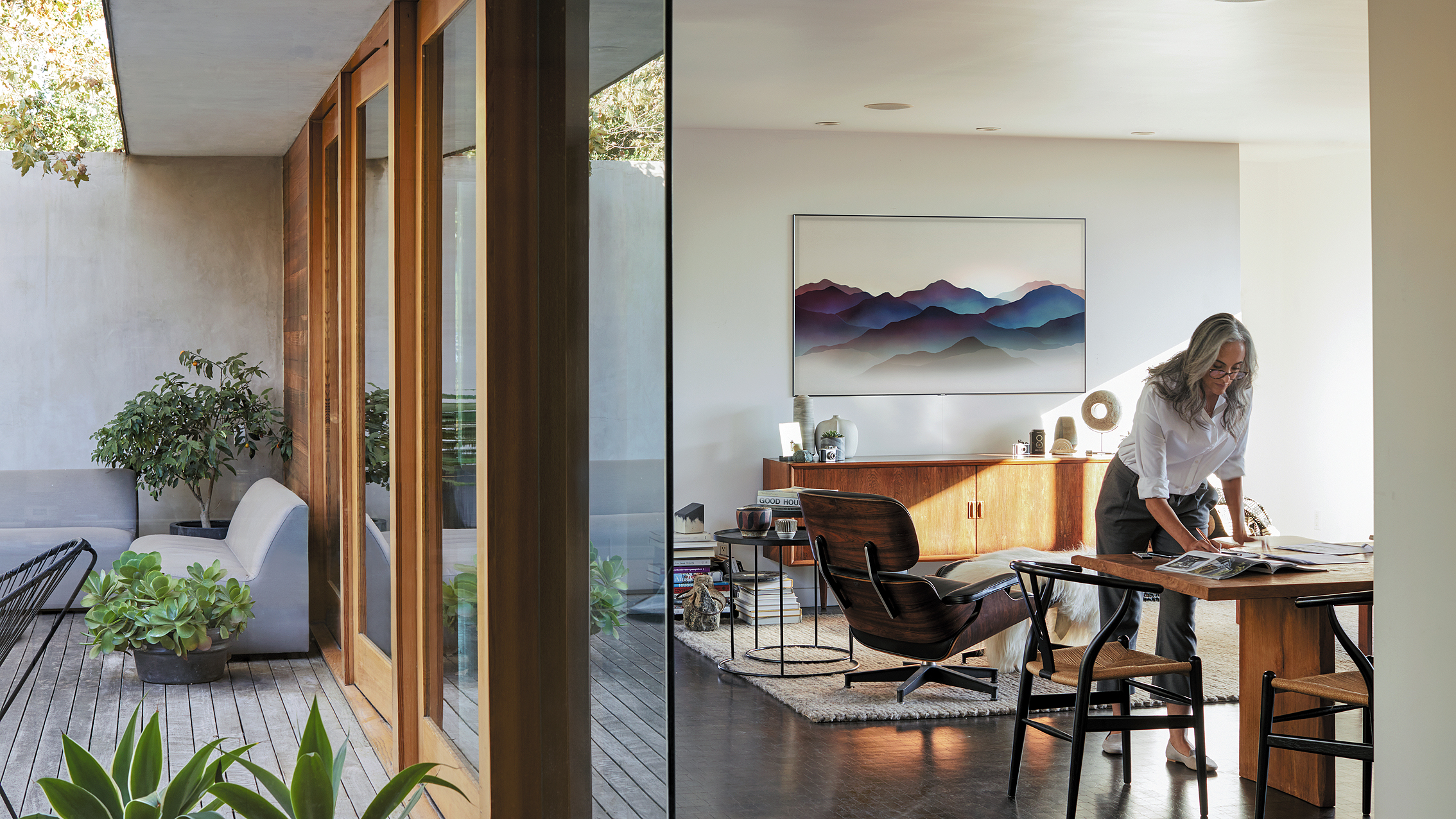
The Q9FN isn’t just a great advert for Samsung’s refined QLED TV tech, it’s the best TV Samsung has ever made, and means OLED is no longer the automatic choice when buying a high-end TV.
-
+
Knockout UHD 4K images – supremely sharp, with excellent colour
-
+
The best bright room HDR performance to date
-
+
Excellent upscaling of HD
-
+
Class leading as a gaming screen
-
+
High quality build and design
-
-
No Freeview Play
-
-
No Dolby Vision HDR or Dolby Atmos, either
Why you can trust T3
Samsung QLED TVs have been consistently impressive since the brand started to push the tech out, but has perhaps struggled to excite reviewers and consumers as much as OLED in the high-end/affordable premium TV market.
Well that all changes now.
Q9FN is the most convincing argument yet for QLED, Samsung’s Quantum Dot powered LED TV tech. Just when you thought OLED had annexed the premium TV market, this note perfect flatscreen comes along and re-tunes the picture.
Key to the Q9FN’s phenomenal performance is its full array backlight. Unlike Samsung’s 2017 models, which were edge-lit, the Q9FN utilises FALD local dimming technology. This enables it to handle extreme HDR, and manage black levels more accurately than an edge-lit set. That's by no means the end of its talents, however, as we shall now discuss.
- Best TV – the best of the best, from £1000 and up
- The best TV under £1000 - affordable 4K options
- Best television under £500 - much cheaper, not much worser
Samsung QE55Q9FN: Deals and pricing
This QLED TV is priced at the premium end of the market but it's now been around for a few months and you should start to see deals online and in stores.
Everyone goes mad for TVs around the Black Friday period so keep your eye on the best Black Friday deals, but you'll find the best daily prices here all year around and you'll likely to find that really tempting prices start to appear in spring 2019.
Samsung QE55Q9FN: Design
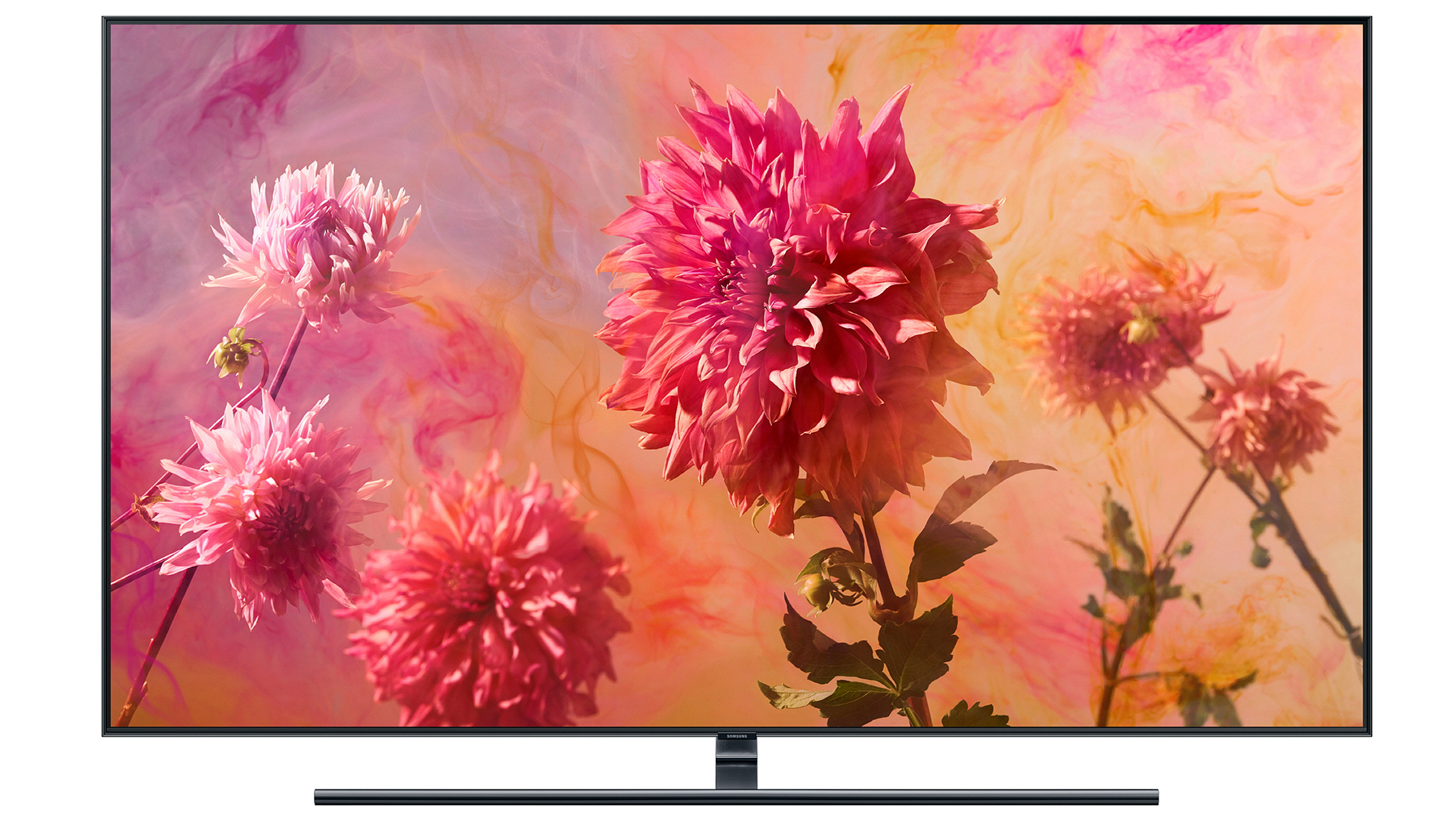
Build quality here is high. The Q9FN has a premium feel, helped by the fact that all cable spaghetti, even the power chord, has been relegated to this new, larger One Connect box. This has become almost a full-size component in its own right.
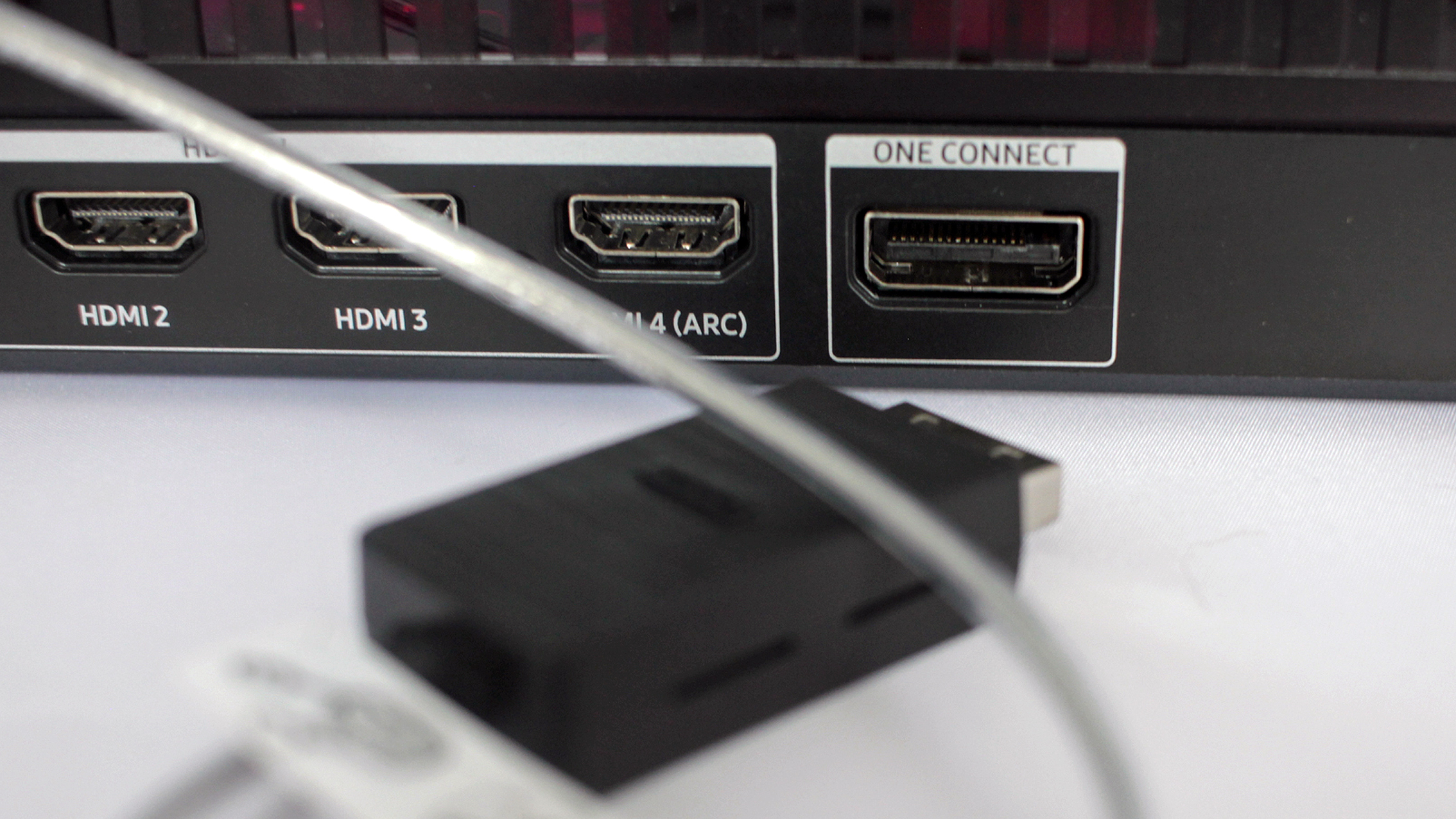
Inevitably, the Q9FN isn’t as super thin as an OLED set. It reqires a direct LED backlight and that has to go somewhere. This translates to a cabinet depth of around 3cm, which of course looks less lean and hungry than 2018's blade-thin OLEDs. However, so long as you intend to look at it from the front rather than directly side-on – as a TV expert, this is what I recommend – this should not really bother you.
Only a single, not-quite transparent, 3.35mm thick cable, links the One Connect and the Q9FN. The supplied length is 5m, which will suit most, although you can buy a 15m alternative if you keep your equipment rack in the garden shed.
Samsung has actually adopted a minimalistic design for the panel. The edges are sharp and angular, and there’s no overy engineered pedestal, just a clean gunmetal T-bar, and it looks the better for it. If you fancy it, there are separate easel and conical tower stands also available.
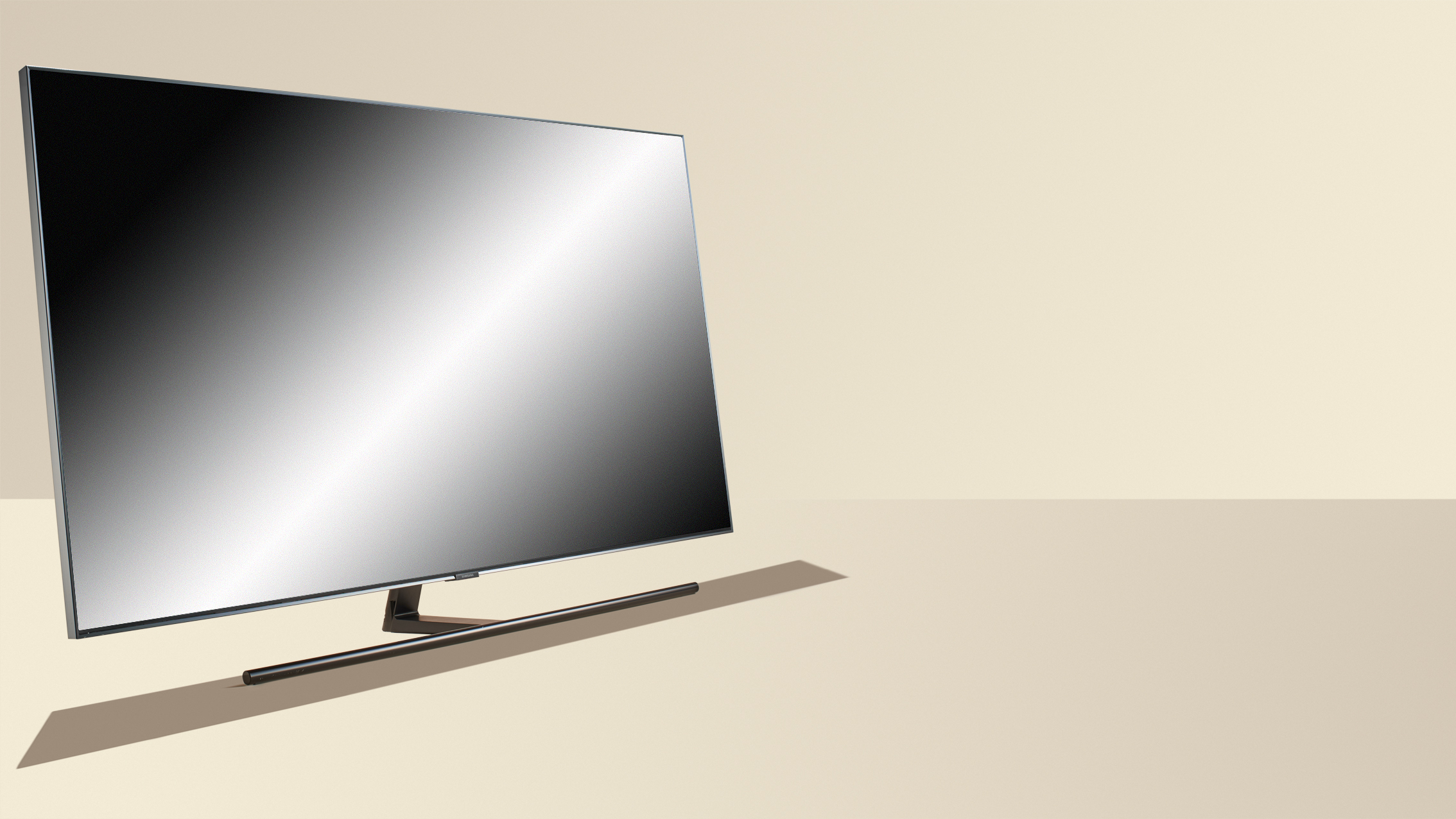
Samsung Q9FN comes in 55-inch, 65-inch and 75-inch sizes
The Samsung Q9FN range
Also available in 65- and 75-inch screen sizes (QE65Q9FN) and (QE75Q9FN) respectively, Samsung’s flagship offers consistently extreme levels of brightness and convincing black levels across the range. This review is specifically on the 55-inch QE55Q9FN, however.
Samsung QE55Q9FN: Performance
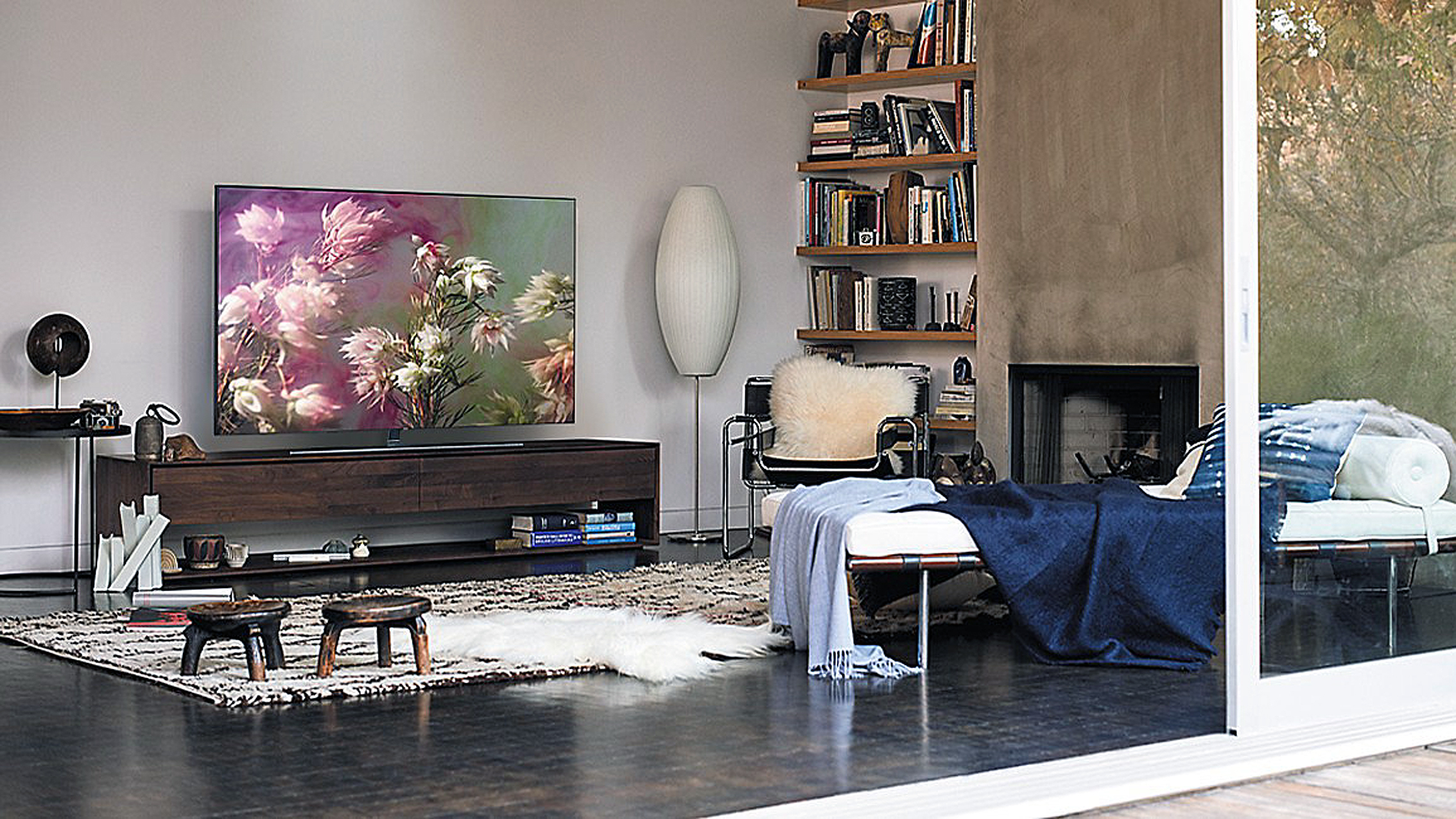
Picture performance on this Ultra HD Premium certified TV is top notch. HD looks pristine, while native 4K content bristles with detail and texture.
While the number of 4K sources is growing rapidly, the likelihood is that you’ll still be watching the majority of your content in HD. The Q9FN does a fine job upscaling. Images are sharp without jaggies, and the extra pixel density is welcome if you’re sitting a little closer – as you should be for 4K.
That said, of course it's UHD material that really shines. The Q9FN has no problem exploiting the resolution jump. Colour vibrancy is high, with skin tones across our recommended presets consistent.
While the spec of the Q9FN’s Ultra Black Elite Moth Eye panel is suitably top notch –with 10-bit wide colour, HDR10, HLG, HDR10+ and the new open Dynamic metadata standard obliquely supported by Amazon Prime – refreshingly, Samsung doesn’t try to over complicate the viewing experience. There are just four image presets – Dynamic, Standard, Natural and Movie. Three of these are good for most content, while the Movie mode dials down the brightness a bit. That could be considered more 'cinematic' but it also makes fine 4K detail less easy to spot. Beyond turning off all the Eco settings, there’s not a great deal required to ensure exceptional viewing.
The set’s HDR performance is barnstorming. Using a 10 per cent window, I measured HDR peak brightness around 1200 cd/m2 (aka nits). With a smaller 5 per cent window (more reflective of actual live HDR peaks), the set is able to climb to near 1400 nits.
If you don't know what that means, let me put it this way: these figures comfortably exceed the average dynamic range of most HDR movies and TV shows, so the Q9FN will rarely have any reason to tone map content. If it’s in the stream or on the Blu-ray, the Q9FN will deliver it.
The set is also fully equipped to deliver an HDR viewing experience in a room with average ambient light. It impresses regardless of what time of day you sit down to watch. You will need an HDR source, however – HDR+ Mode bids to lift SDR material, but isn’t particularly convincing.
Black level performance is surprising for an LED LCD. It’s not as inky black as OLED, but the deficit really isn’t that pronounced. In low light, black widescreen bars really do appear as purest ebony.
The FALD backlight is really precise, with only rare blooming or halos around bright objects. A new dimming algorithm does a remarkable job keeping contrast and detail tight.
The Q9FN manages the cute trick of being able to deliver near black detail while having the headroom for really bright spectacular highlights. An anti-reflective filter maintains contrast in rooms with high ambient light.
The set’s motion handling is generally fine. In its Auto Motion Plus mode, it does a solid job of retaining detail, however this comes with a fair quantity of motion artefacts. A better option is the Custom mode, with Blur set around 10 and Judder at no more than 4. This retains detail but militates against motion smudging.
There’s also an LED Clear Motion black frame insertion option, but this isn’t recommended, as it darkens the image and introduces unwatchable levels of flicker.
If you’re a gamer, you’re in luck. I measured input lag, in Game Mode, at just 13ms (ensure Game Mode Plus is switched Off), which means even fast paced FPS shooters won’t be compromised by the display.
One additional benefit of the full array backlight is that it’s afforded Samsung some room to incorporate a reasonably effective sound system that offers both volume and heft. The sound presentation is rather monophonic though, and we would still recommend upgrading to a separate sound system at some point.
Screen uniformity is excellent. The Q9FN has a good many more LED clusters than the rival FALD Sony ZD9.
Samsung QE55Q9FN: Features and smart TV
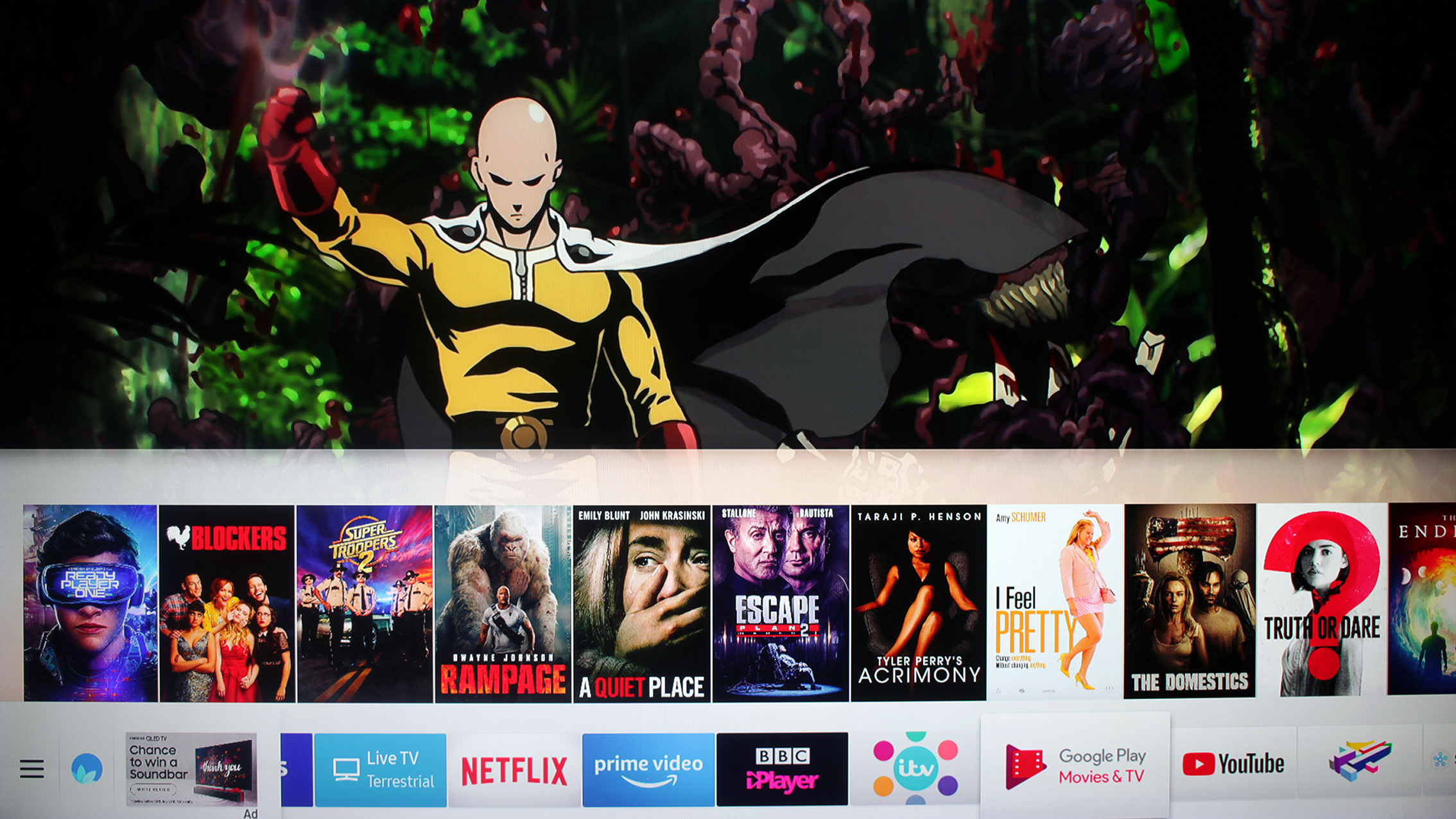
Samsung’s latest Tizen Smart OS is clean and intuitive, accessed via low horizontal bars. One offers curated content thumbnails, the other is a scrolling list of apps and services. Samsung doesn’t offer Freeview Play, which means there’s no roll-back programme guide. However it does have Catch-up players for all the main TV channels, as well as Samsung’s own TV Plus curated content. Stalwarts such as Amazon prime Video, Netflix, Now TV and YouTube are also on board.
Perhaps the the biggest talking point here is Ambient mode. This allows you to utilise the Q9FN even when not watching telly. The screen can blend chameleon-like with wall-coverings (you’ll need the requisite app), the so-called see-through mode, or can function as a picture gallery, and display news or weather. We’re not sure if any of this is preferable to simply turning the TV off when not in use, but there’s no doubt that it’s cute.
Two remotes are supplied. One a standard IR controller, the other a rather nicely finished metallic Bluetooth offering, with voice control.
Connectivity comprises four full bandwidth HDMIs, all HDCP 2.2 compliant a trio of USBs, ethernet and tuners (terrestrial and satellite), plus an optical digital audio output.
The TV can also be used with the brand’s new Samsung Connect app, and is compatible with Samsung SmartThings IoT products.
Samsung QE55Q9FN: verdict
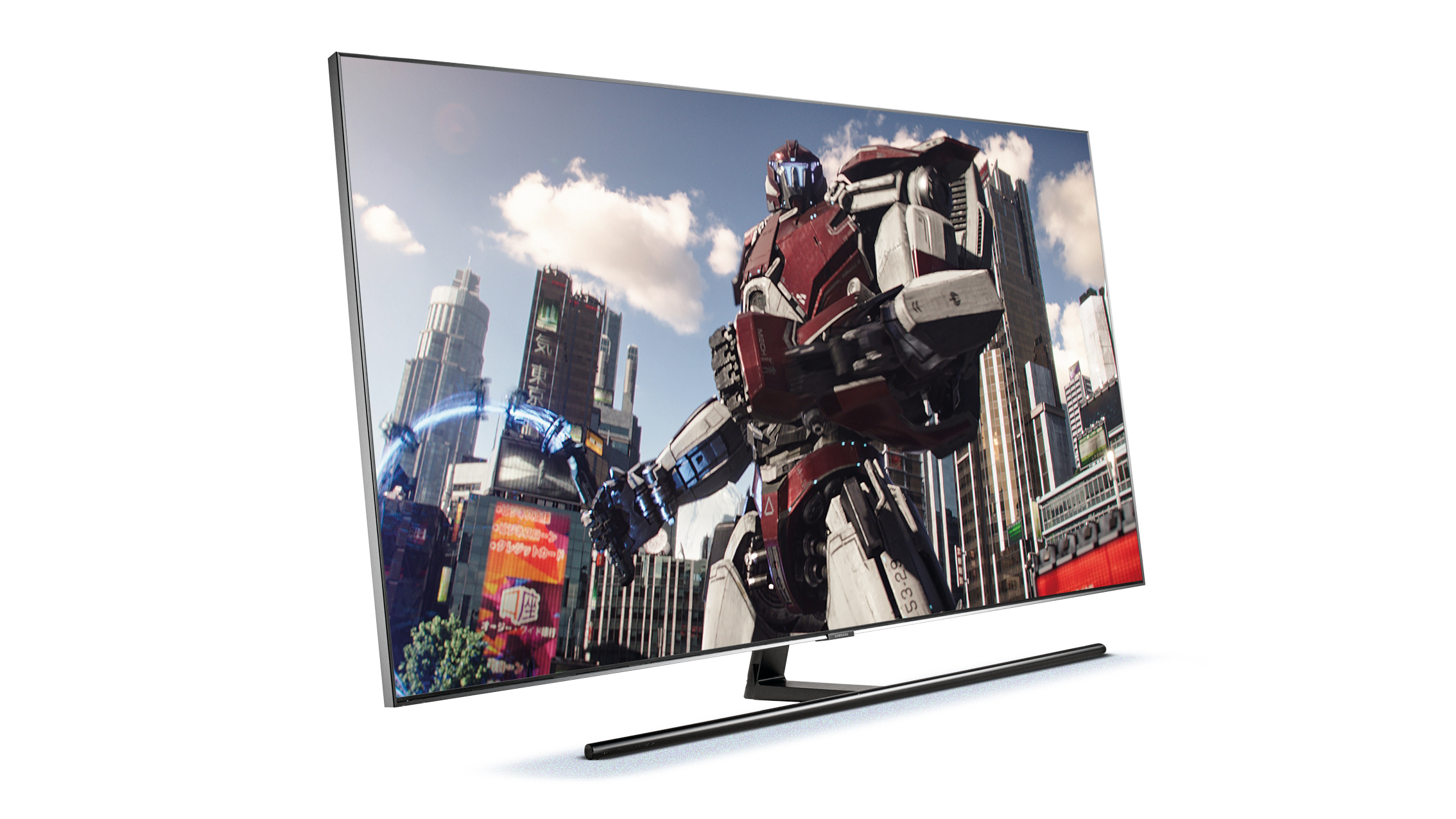
With the Q9FN, Samsung has produced a knockout flatscreen that offers the best bright room HDR performance we’ve seen to date, plus movie-night friendly contrast and supreme image sharpness. Its gaming performance is also class leading.
If you thought OLED had the high-end market sewn up, you might just have to think again as this is a breathtaking TV.
Sign up to the T3 newsletter for smarter living straight to your inbox
Get all the latest news, reviews, deals and buying guides on gorgeous tech, home and active products from the T3 experts
For over 25 years, Steve has been casting his keen eyes and ears over the best that the world of TV and audio has to offer. He was the creator of Home Cinema Choice magazine, and contributes to huge range of technology, home and music titles along with T3, including TechRadar, Louder, Ideal Home, the i newspaper, and more.
-
 How to watch Mario Kart World Direct – everything you need to know about the Switch 2 launch game
How to watch Mario Kart World Direct – everything you need to know about the Switch 2 launch gameNintendo will host a new Nintendo Direct presentation this week, here's how to watch it live and what to expect
By Rik Henderson Published
-
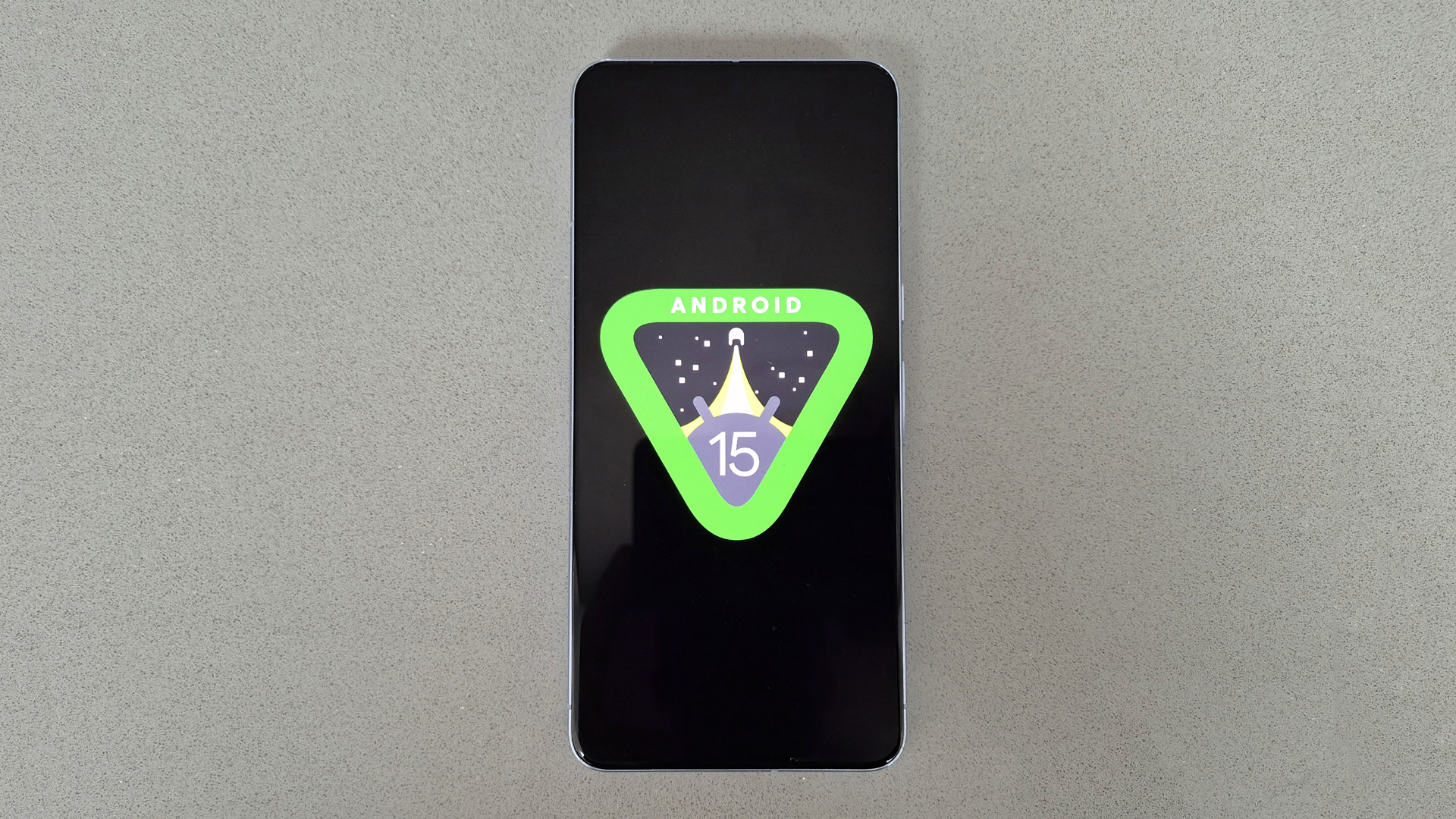 Google delivers bad news for budget Android phones
Google delivers bad news for budget Android phonesCheaper Android phones might need to change to meet new Google rules
By Chris Hall Published
-
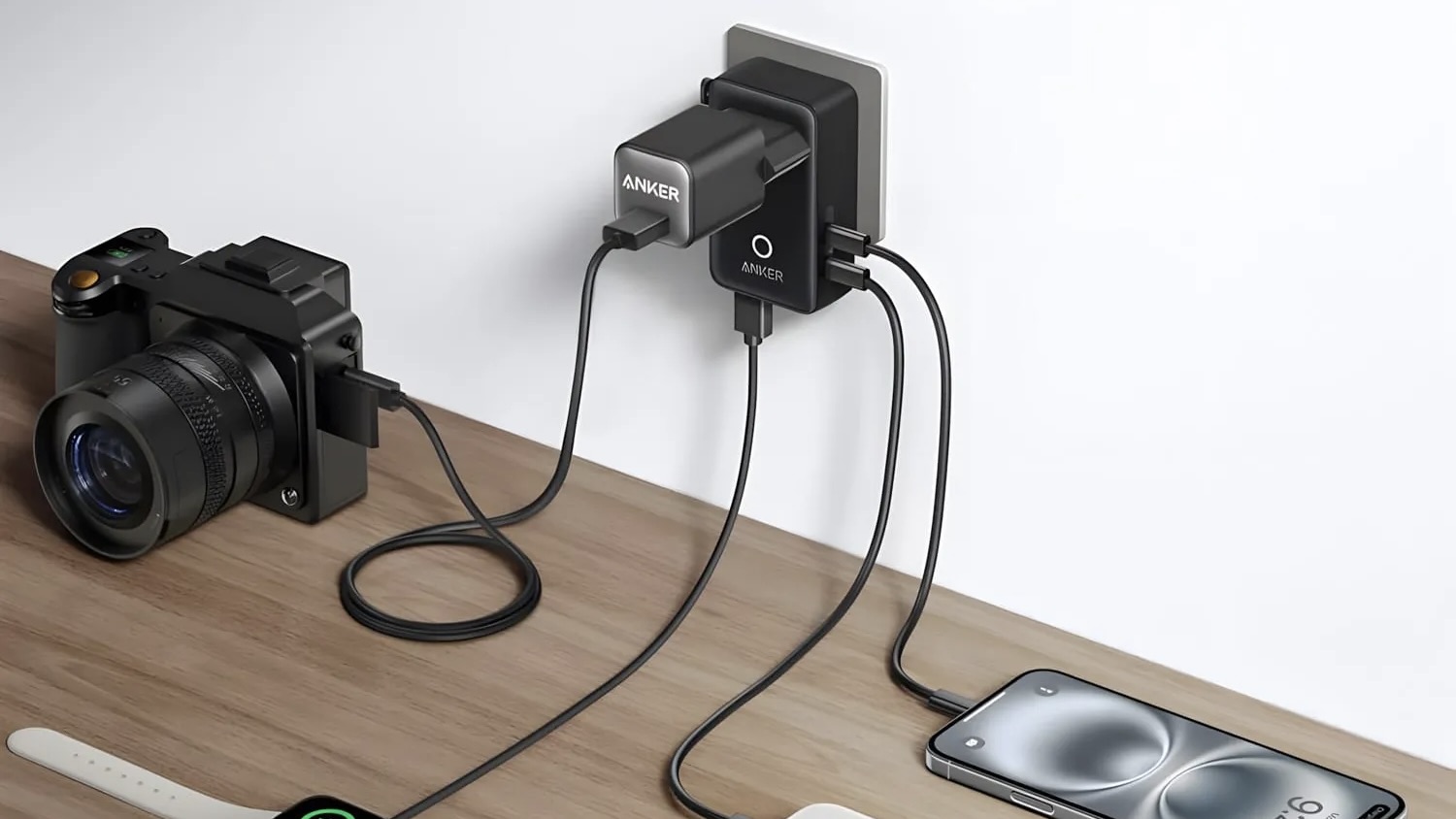 Anker's new 5-in-1 travel adapter is now available in more countries – phew!
Anker's new 5-in-1 travel adapter is now available in more countries – phew!It works in over 200 countries
By Lizzie Wilmot Published
